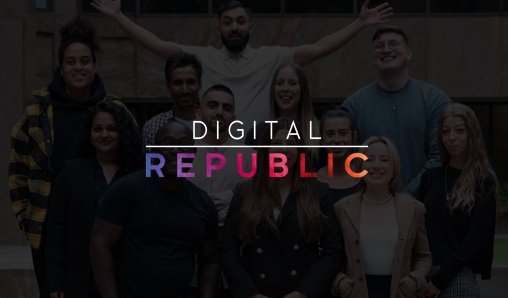
Why Vaccine Distribution Programs Must Be Digital, Scalable And Citizen-Focused?
It wasn’t long after the pandemic began that governments realized some of their more antiquated processes — based in old databases and paper forms — weren’t going to hold up under the pressure of a global crisis. Call centers reached capacity, public employees worked hours of overtime and data quickly became delayed and obsolete. A digital transformation was necessary, not at the traditional speed of government, but right away.
Government and health officials found that digital solutions could save them time, increase response rates, produce conversations at scale and resolve tension as they fought the novel coronavirus. Now, with a COVID-19 vaccine on the horizon, governments will need to apply the same digital lessons they learned testing and tracking the virus to safely and efficiently vaccinating their community.
As the world prepares for the largest vaccine distribution in history, governments must find ways to both run massive workflows and proactively engage with their residents before, during and after vaccination. To do so successfully, they will need user-friendly technology, flexible and customizable solutions and citizen-focused digital programs.
Technology must be easy to use: The success of vaccines is largely dependent on participation from the majority of the population. During the pandemic, governments were able to increase the participation rates of testing and monitoring programs simply by making it as easy as possible for residents to participate.
A new program in Los Angeles County, called Angelenos in Action, sends residents a short weekly questionnaire via email or text that asks about any COVID-19 symptoms they might be experiencing. Public health officials use those insights, along with information collected from hospitals and clinical laboratories, to provide a more complete picture of the burden of COVID-19 in LA County.
By keeping their outreach simple and allowing residents to provide feedback on their phones, the county saw weekly response rates of nearly 80% — an increase of 50% from typical government questionnaires.
Governments across the country have successfully used text, SMS, email, mobile apps and direct person-to-person communication to handle processes like COVID-19 testing, scheduling and contact tracing. The same tools and best practices can be applied for vaccine distribution. Using technology that residents are already familiar and engaged with will increase participation rates.
Flexible and customizable solutions are key to dealing with the shifting landscape: During the pandemic, governments have learned that circumstances can shift quickly with new information. To successfully administer a vaccine, states must implement systems that allow them to swiftly and easily pivot their vaccine distribution strategy when unforeseen challenges arise.
When the pandemic first hit Orlando, Fla., not only did the city have to decide how to transition employees to virtual work, but it had to quickly digitize processes that weren’t available online.
The city was able to determine, via experience management software, where its 300 services fell short and engage the proper departments to address emerging trends before they became significant problems. What quickly became clear was the pressing need for the city to become more responsive to residents — especially at a time when services couldn’t be rendered in-person.
To solve the problem, the city repurposed tech already in use. Virtual communication tools that had previously been used for internal communications were deployed for remote safety inspections or to allow citizens to participate in virtual city councils. The city’s service quality, continuity and adaptability were “really going to determine how the public perceives our response to COVID-19,” Orlando’s Director of Innovation Matt Broffman said.
And the same can be said of a vaccine distribution system. Without the ability to adapt and customize as circumstances change, governments may find themselves on the outs with citizens who may already find it difficult to trust a new vaccine.
Digital programs must be focused on meeting the needs of all citizens: A recent Qualtrics study found that over 40% of Americans said they do not plan on being vaccinated or are unsure of what they’d do when a COVID-19 vaccine becomes available. And more than half (54%) say they’d rather wait before getting the vaccine to make sure it’s safe and effective.
The experience of early vaccination participants will significantly impact confidence in the process for those in later phases. Patients will also likely need regular follow-up after receiving the vaccine; some might require more than one dose and others monitored for adverse effects.
Health officials should be positioned to follow up on patients’ experiences documenting responses to questions like, “How comfortable were you with the vaccine process?” Or, “Are you experiencing any side effects?” Digital programs that allow health care officials to understand early participants’ experiences will help others tweak the processes and procedures to better meet citizens’ needs.
Having a digital process in place can also help governments reach all residents at scale and overcome language and geographical barriers that may hinder communication. In San Bernardino County, Calif., the local government began using an agile digital solution to stand up an appointment scheduling system for COVID-19 testing. In the first weeks, 300,000 residents had requested appointments and 100,000 set confirmed appointments. Digitizing the process helped to quickly roll out testing — at scale — in the community.
Administering a vaccine after months of quarantine and amid widespread scepticism won’t be easy, and governments will need to rely on the tried and true lessons they learned when COVID-19 first began to spread. Success will not hinge on technology alone, but on its adaptability, ease-of-use and focus on the people that are at the heart of it all.
Originally posted by Chelsie Bright
If you enjoyed reading this article, you might want to check out this one too!
Digital analytics, data science, cloud, programmatic or optimisation expert, and looking for a job at the moment? Check out our latest live vacancies here
Contact us by submitting a quick form here. We are here to support you!



